Thailand is home to a diverse wildlife that includes thousands of creepy crawlies – and that means spiders, too.
Though there are a wide variety of spiders in Thailand, chances are that you’re unlikely to encounter big species in major cities like Bangkok, Phuket and Chiang Mai.
In fact, you probably won’t even see these types of arachnids by the beach or in the countryside, unless you’re trekking through the jungle or staying in remote and rural areas where your accommodation is near a patch of lush vegetation.
I've been to a variety of North and North Eastern provinces and never seen a big spider, only small ones occasionally like I see back home.
I've encountered just two spider “incidents” in 10 years.
The first was when I was staying in the Maya Buri in Koh Samui. The accommodation is bungalow style and there's quite a lot of trees and vegetation around.
I looked up from my bed, and there, on the wall, was a big spider.
Still to this day I have no idea what species it was. It looked black to the eye, but it wasn't a tarantula. Perhaps it was a Huntsman.
I tried to shoo it out but it just jumped to another spot. I've always been uncomfortable of spiders and had no choice but to sleep with it in the room that night; I hardly slept.
The next day it was on the opposite wall and I called a member of staff to remove it.
I'm not so much scared of spiders, but I don't like the way they move or look and can't bear the thought of being near them. It's the fact that they are just suddenly there, or living near you and crawling over you in the nighttime when you're unaware.
I'm going to leave my story of the second incident until the end of this post, after we've covered the list of common Thailand spiders below.
Those unnerved by these creepy-crawlers will be pleased to know that fatal spider bites are incredibly rare, numbering less than 3 worldwide per year. These fatalities are largely due to allergic reactions and slow medical response times.
To avoid unnecessary contact while hiking and camping in rural areas, be sure to shake out all clothes and shoes before puting them on – spiders like to be cozy, just like the rest of us!
If you are scared of spiders, don’t be spooked.
The presence of spiders in Thailand is no reason to cancel what’s sure to be a great holiday, and chances are you won't see one.
Here's a rundown of Thailand's 10 most common spiders: their appearance, habitat, and — in the extremely rare case you’re bitten — what you should do to alleviate the symptoms.
10 Most Common Spiders in Thailand
1. Black Widow
Appearance
Black Widows are easily identifiable — they have shiny jet black coloring (though they can also be deep brown), a bulbous body, long and spindly legs, and a bright red splash on their backs, often in an hourglass shape.
Habitat
Black Widow Spiders have migrated to nearly every country on Earth, so they can be found pretty much anywhere in Thailand. They’ve been known to take up residence outside houses and in very rural areas. They gravitate to places where they can safely string their web, as they have very poor eyesight.
Bite
The bites of Black Widows are rarely fatal, but they may cause extreme discomfort to the victim. The female spiders’ venom contains a neurotoxin, latrotoxin, which can cause pain, vomiting, sweating, and muscle rigidity. If you are bitten, seek medical attention immediately to rule out the possibility of your bite worsening.
2. Black Tarantula
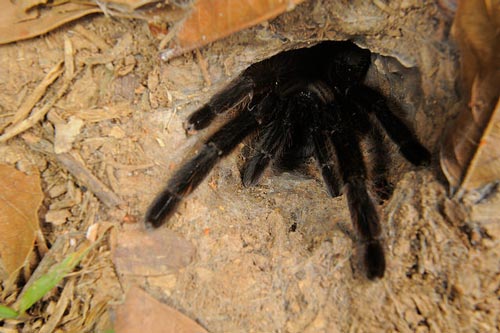
Image Credit: tontantravel
Appearance
The Black Tarantula is large, fuzzy, fast and aggressive, and dark-colored – if you’re frightened of spiders, you definitely do not want to come in contact with one of these.
Habitat
Belonging to the spider subfamily Ornithoctoninae, which means ‘earth tiger,’ the Black Tarantula live in underground burrows that can reach deep into tropical forests. Fond of high humidity situations, the Black Tarantula is known to live in large numbers in Khao Sok National Park.
Bite
Tarantulas are nervous creatures and often bite suddenly when startled, so if you spot one on a trail, try to give it a wide berth.
Even though its bites are rarely serious, there’s always the possibility that you are unknowingly allergic to its venom. In the unlikely scenario that you are bitten, flush out the bite with water and soap and consider taking a pain reliever like ibuprofen.
3. Golden Orb Web Spider
Appearance
The Golden Orb Web Spider is quite beautiful. Named because their impressively intricate webs shimmer golden in the light, the modestly sized (15 cm) spiders have a long, thin, jet-black body, long, thin legs, and golden spots that dot their backs.
Habitat
Golden Orb Web spiders are shy, and like to build their enormous webs (2 meters across) on top of towering clusters of trees. Focused weavers, these spiders will construct mesh layer after mesh layer to protect their territory and ‘main web,’ where they can usually been seen resting.
Bite
While Golden Orb Web spiders bite their prey to immobilize it, this bite is of little consequence to most people and is largely ineffectual. You may experience some discomfort, but you’re likely not in any danger.
4. Huntsman
Appearance
If big spiders aren’t your cup of tea, we’re sorry to say that the Huntsman Spider is one of the largest in the world, growing as large as 30 cm!
In Thailand they’re often as large as a grown man’s hand. With long, strong legs, and a fuzzy body, these spiders are a mottled brown and tan color, making them difficult to spot against a forest floor.
Habitat
The Huntsman Spider’s natural camouflage serves it well in the woodland and forest areas that it calls home. Unfortunately, they also are curious enough to venture into houses and dwellings in rural areas, most likely because they do not spin webs, but hunt for insects and small invertebrates.
Bite
Fortunately, these spiders are shy and often scared of humans. Huntsman aren’t known to aggressively bite humans, but if you do get bitten, you’re likely in for a little discomfort and swelling that will subside in a day or two.
5. Harvestman Spider
Appearance
A common spider in Thailand, the Harvestman is also one of the Kingdom’s least threatening. Small bodied, neutral colored, and long-legged, the Harvestman is difficult to spot and unlikely to bother humans who come across it.
Habitat
Harvestman spiders are land and tree-dwellers and can be found all over Thailand. Female spiders lay eggs once annually in damp soil, and the adult spiders climb trees and scour the ground for their favorite snacks, including caterpillars, larvae and slugs.
Bite
These tiny spiders pose no threat to humans — they have no venom glands and don’t even possess fangs. The tiny claw-like shapes on their face are used for gripping bark and prey — and are nowhere near big enough to break human skin.
6. Wolf Spider
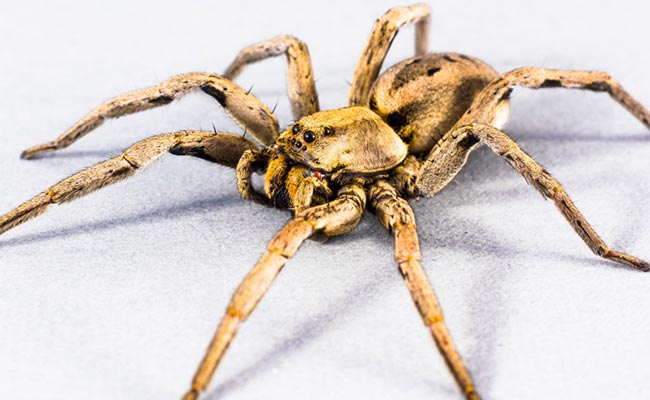
Appearance
You’ll recognize a Wolf Spider from its distinctive striped legs and it’s large, double-barrelled body. Tawny and brown, these spiders often exhibit Zebra-like stripes on their thorax.
They range from 10 to 35 mm, and have eight eyes that are stacked in three levels. Natural hunters, they have extremely good eyesight and sense of touch.
Habitat
Wolf Spiders live in shallow burrows and congregate in leafy and grassy woodland areas. They are often masters of camouflage, and are excellent hunters.
At the advent of colder weather, these spiders may be tempted to move into your home, so keep an eye out if you live in a rural place.
Bite
Fortunately, Wolf Spiders are not aggressive creatures. They will only bite if continually provoked, so be forewarned!
If you are bitten by a Wolf Spider, expect serious discomfort, and likely only that. However, to prevent the situation from worsening, seek medical attention immediately after contact.
7. Yellow Sac Spider
Appearance
This unique-looking spider is aptly named. A pale yellow, almost ‘blonde’ color, these spiders somewhat resemble tarantulas because they are similarly hairy. However, these spiders are easily identified by the massive yellow sac at the base of their body and by their prominent front fangs.
Habitat
This spider prefers hot, dry areas and builds a silken tube in which to rest before hunting in the cover of night.
Bite
The Yellow Sac Spider leaves a nasty bite — one that can be felt for up to ten days. Their venom inflicts sharp pain (reminiscent of a wasp sting), in addition to symptoms like nausea and even skin necrosis. It’s best to seek medical attention after a bite like this.
8. Jumping Spiders
Appearance
One of the largest families of spiders, this genus includes nearly 6,000 separate species. They are often small, with four large eyes that provide excellent vision. They can jump nearly 20 times their body length and often have relatively thick legs.
Habitat
Jumping spiders live just about everywhere, though they tend to favor tropical forests. Found additionally in brush lands, temperate forests, mountainous regions, and intertidal areas.
Bite
While their bites are venom-laced, a Jumping spider is unlikely to cause a human fatality. Bite victims may experience red, swollen, painful wounds, and in more severe cases, fever, headache, and nausea. If you’re feeling poorly after a bite, consider visiting a doctor.
9. Lynx Spider
Appearance
These funny little spiders have a distinct appearance — comparatively small, most have large, noticeable bristles on their legs that help the spiders hold onto struggling prey.
Often brown, golden colored, or green, they’re quite unobtrusive and even hard to spot. Alert, speedy, and sharp-eyed, they’re predators, as well.
Habitat
Lynx spiders can be found in most regions of Thailand, hiding in lush vegetation as they like to eat flower pollinators.
Bite
While it’s rare for Lynx spiders to bite humans, female spiders can be territorial regarding their egg sacs. Since these spiders are so small and non -threatening, symptoms are often short-lived and not particularly painful.
10. Sheet Weaver
Appearance
These tiny spiders are often less than 6 mm and hard to spot — good news for arachnophobes! Their tiny bodies are often intricately patterned, with neutral colors or bright ochre and black. Their legs are short and their abdomens stout.
Habitat
Found everywhere from the rolling hills of Chiang Mai to the ceilings of the apartments in Thailand’s busiest cities, Sheet Weavers (and their webs) are ubiquitous, but unobtrusive.
Bite
Because they are so small, they are of no risk to humans.
If this list didn’t do anything to assuage your fear of spiders, here's some quick travel advice for arachnophobes:
- Choose hotels instead of rustic beach-style huts or rooms; forgo bungalow or tents.
- Don’t go trekking. If you're going to see a spider, it'll most likely be in the jungle.
- Keep it city-centric: stay in cities like Bangkok and Chiang Mai.
- Stick to medium-to-high-end beach resorts. These more luxurious places tend to spend money on keeping pests away from their guests. Wow, that rhymed.
My Spider-Banana Encounter
So, as promised, here's what happened in my second spider encounter…
I bought a bunch of bananas and other fruit from my local fruit lady. I came home with my bag and put it on the side in the kitchen.
Just before bed I remembered it was there, so as usual I proceeded to wash the fruit to get rid of any ants and dirt before putting it in my fruit bowl.
You know where this is going…
As I washed the bananas, I noticed a silky, oval-shaped patch straddled between two of the bananas. It took a few seconds to sink in, but it dawned on me that this could be a spider's web left over from being plucked from the tree.
I grabbed the bunch and went into the bathroom. I threw the bananas into the sink and turned the water on full blast thinking it would wash the webby thing away.
But to my horror, suddenly it burst open and a number of tiny white baby spiders ran out over the bananas.
Bear in mind that my 1-year-old daughter was asleep in the other room, and I became fearful that these spiders were dangerous and could harm her if they escaped into the rest of the apartment.
So I used the toilet water spray to blast them down the plughole…
…But then, mum emerged. All I remember seeing was legs coming over the top of the bananas. It was a nightmare, especially for someone who isn't comfortable with spiders, to say the least.
All I was thinking was that this spider as going to escape and bite my daughter. So I reached for the toilet cleaner and sprayed it.
It wouldn't die; it just kept coming!
Eventually it did and I was able to dispose of it.
Having researched spiders afterwards, I felt very guilty because I realised it probably wasn't harmful, and in hindsight I should have just ran out the apartment and thrown the bananas away; but it was 6 flights down or a wait for a lift and I just panicked.
I still regret killing the spider to this day.
Since these two incidents, I've actually become more comfortable with spiders and if I see one in the house (when back in the UK), as long as it isn't huge, I'll just let it be. The only others I get in the apartment in Thailand are the Harvestman type (see the list above), which have very tiny bodies and tend to stay in the same spot for ages.
If you are arachnophobic, don't let my story put you off. It was a rare incident, and if you buy your bananas in the supermarket you won't have a chance of running into a situation like that.
Got a Thailand spider story? Let me know below.
Last Updated on
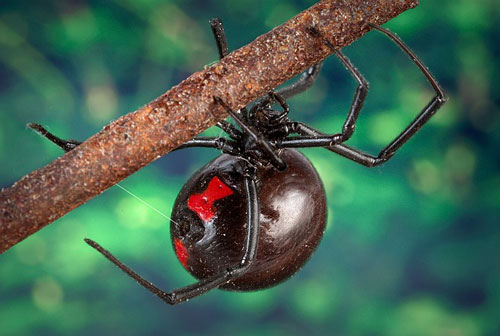
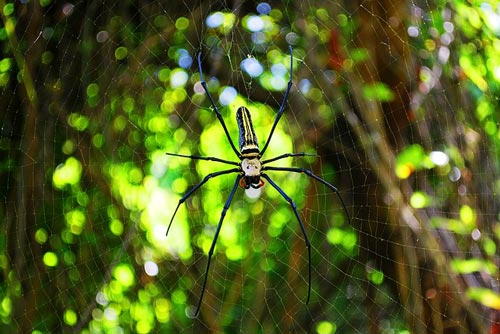
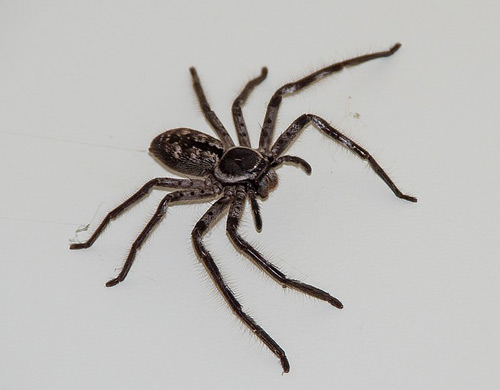
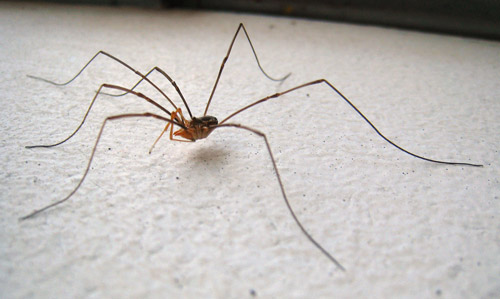
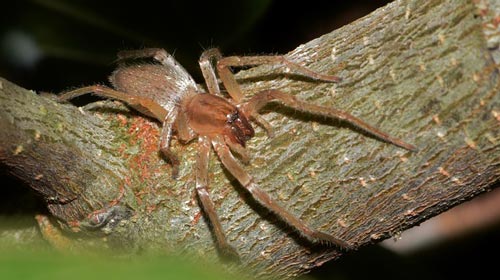
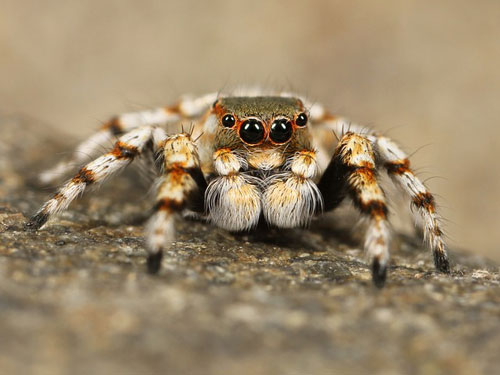
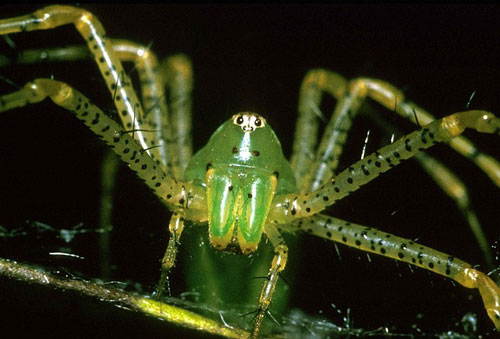
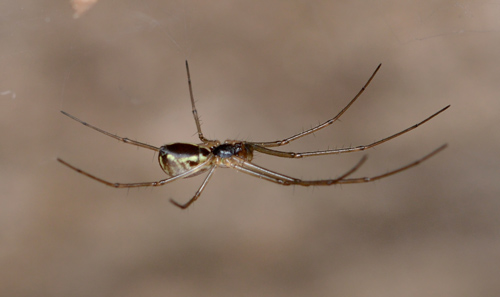



Yannick Gleichauf says
I don't think I'll survive this.
Apr 16, 2019 at 4:34 pm
TheThailandLife says
Apr 16, 2019 at 6:05 pm
Laurie McNab says
May 21, 2020 at 6:47 am
TheThailandLife says
May 21, 2020 at 6:04 pm
Miska says
Nov 22, 2018 at 11:56 am
TheThailandLife says
Nov 22, 2018 at 7:27 pm
Warrick Coe says
Oct 28, 2018 at 10:22 pm
TheThailandLife says
Oct 29, 2018 at 6:16 pm
L says
Sep 07, 2018 at 10:13 pm
Ray Pearce says
Jul 08, 2018 at 10:44 am
TheThailandLife says
Jul 09, 2018 at 6:24 pm
Tim says
I really hope that guy got the shock of his life when unpacking his shopping later that evening!
May 01, 2018 at 9:31 pm
TheThailandLife says
May 02, 2018 at 4:09 pm
Jacob says
Apr 19, 2018 at 12:26 am
TheThailandLife says
Apr 19, 2018 at 3:08 am
David says
Anyways, a Scotsman is hosting a party; goes to close the gate and then yells, was bitten by a spider, his hand swelled up like a young coconut :) His Thai wife's grandma goes out for a wonder, comes back with some leaves, rubs it on his hand and the swelling subsides within minutes. Local knowledge I guess. Not sure of the species that inflicted the bite.
Feb 22, 2018 at 9:26 am
TheThailandLife says
Feb 23, 2018 at 1:19 am
James E says
Jan 31, 2018 at 11:00 pm
James E says
Jan 31, 2018 at 5:12 am
TheThailandLife says
Jan 31, 2018 at 6:34 pm